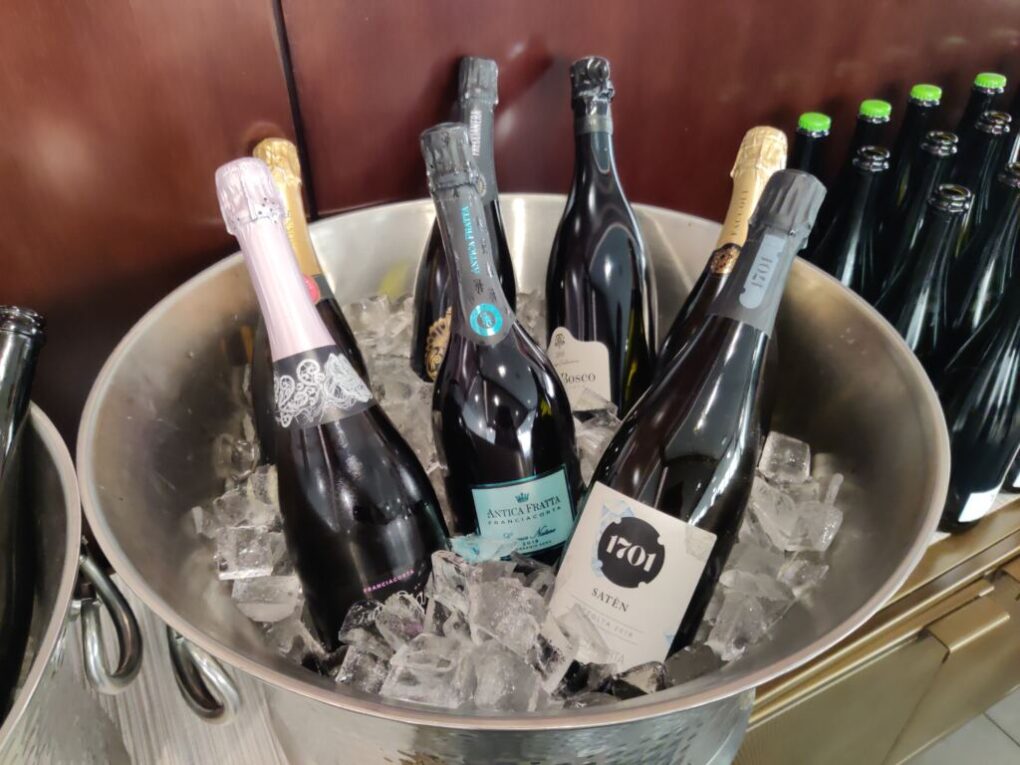
Franciacorta is a sparkling wine-producing area within Lombardy, situated in the province of Brescia. It is recognized as one of Italy’s most prestigious sparkling wine regions, and has held Denominazione di Origine Controllata (DOC) status since 1967, the same year Franciacorta was officially recognized as a sparkling winemaking territory. Franciacorta was awarded Denominazione di Origine Controllata e Garantita (DOCG), the highest designation status for Italian wines, in 1995. The name Franciacorta is now synonymous with fine sparkling wines.
Sparkling wine production has existed in Franciacorta since the 1500s. The region credits winemaker Franco Zilliani, who created the region’s first Pinot di Franciacorta in the 1960s, with having brought traditional method (also known as metodo classico (Italian), and méthode champenoise (French)) sparkling wines to the area. Moreover, the popularity of Champagne in France (the first sparkling wine made using the traditional method) incentivized other Franciacorta-area winemakers to make traditional method sparkling wines. This production process involves a secondary fermentation in the bottle. The result is sparkling wines with a more energetic and persistent effervescence, and greater complexity.
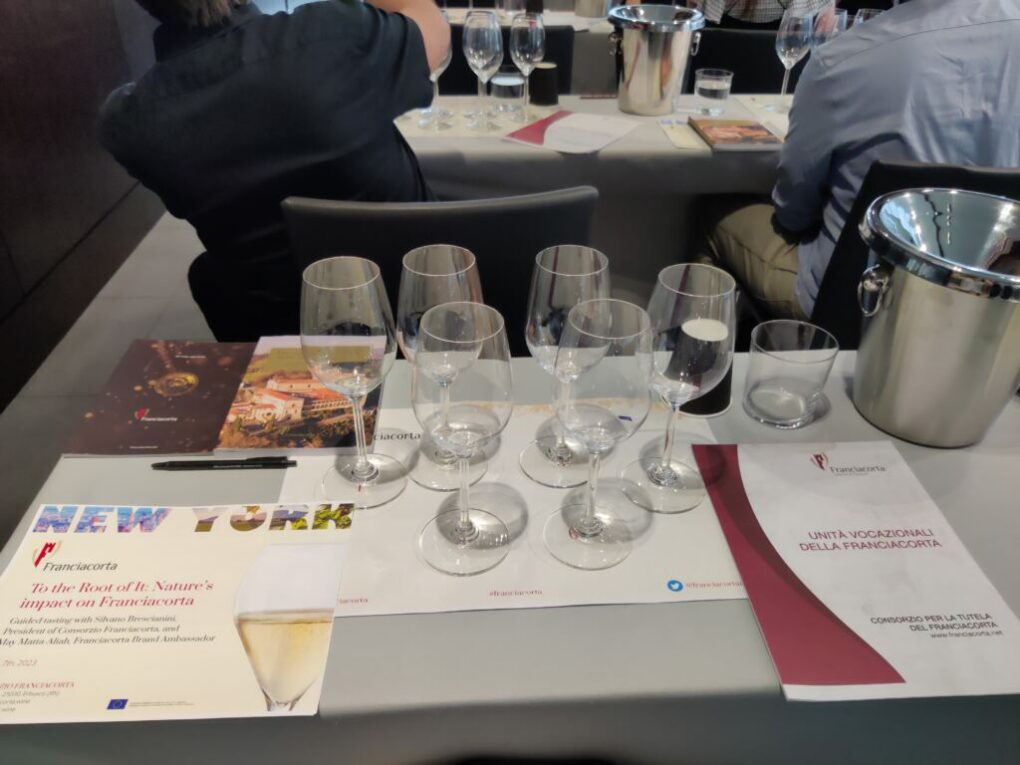
Franciacorta is produced using three grape varieties including Chardonnay, Pinot Noir, and Pinot Blanc, with Chardonnay being the most planted varietal in the region. The cool climate and the unique soils of Franciacorta, characterized by clay, limestone, and moraine deposits, contribute to the distinctive terroir of the region.
The production process begins with the harvest, followed by gentle pressing of the grapes to extract the juice. The base wines undergo primary fermentation, and then a blend is created, typically combining wines from different vintages to achieve consistency and complexity. Sugar and yeast are added to the blend before bottling, where the secondary fermentation takes place. The bottles are aged on their lees for a minimum of 18 months, with some wines aged for several years, resulting in elegant, multi-faceted wines with a fine mousse.
Franciacorta are recognized for their persistent effervescence, quality, refinement, and flavor complexity. They tend to have a citrus, green apple, pear, and floral character, along with a crisp acidity, and a creamy texture. These characteristics are indicative of the grape blend, the terroir, and each winemaker’s unique expression of these elements in the wine. Franciacorta is crafted as a non-vintage, single-vineyard (millesimato), and vintage (riserva) sparkling wine. Franciacorta is produced as both a spumante (6+ atm of pressure) and a Saten (up to 6 atm of pressure). Saten can be produced as Zero Brut, Extra Brut, and Brut, but not as Demi-Sec (semi-sweet) or Sec (sweet). It can also be crafted as a Blanc de Blancs with Chardonnay, and up to 50% Pinot Bianco in the blend.
The Consorzio Tutela Vini di Franciacorta (Consortium of Franciacorta) established in 1990, oversees and regulates the production of Franciacorta wines to guarantee that each wine from Franciacorta was made from grapes grown within the appellation, and produced in accordance with established guidelines for quality control. The Consortium recently approved the addition of up to 10% L’Erbamat, (a white varietal indigenous to Brescia) to the list of approved varietals, and up to 10% can be added to the classic blend. Studies are ongoing to determine which clone of L’Erbamat is best suited to the terroir.
The last 10 years, as well as 2023, have been particularly challenging ones for Franciacorta producers. Abnormal and prolonged hot temperatures in the summer (a factor that causes grapes to ripen prematurely), as well as excessive rainfall and humidity (conditions that give rise to potential fungal diseases), have exacerbated the stress on vines.
Today, Franciacorta is considered one of Italy’s top sparkling wine regions. It is a wine of celebration; yet it is also remarkably food-friendly, and adaptable to a wide variety of cuisines. Its natural acidity makes it a great candidate for spicier cuisines, while its citrus fruit-dominant flavor profile allows it to work seamlessly with lighter fare. Please consider these Franciacorta from some of the region’s top producers:
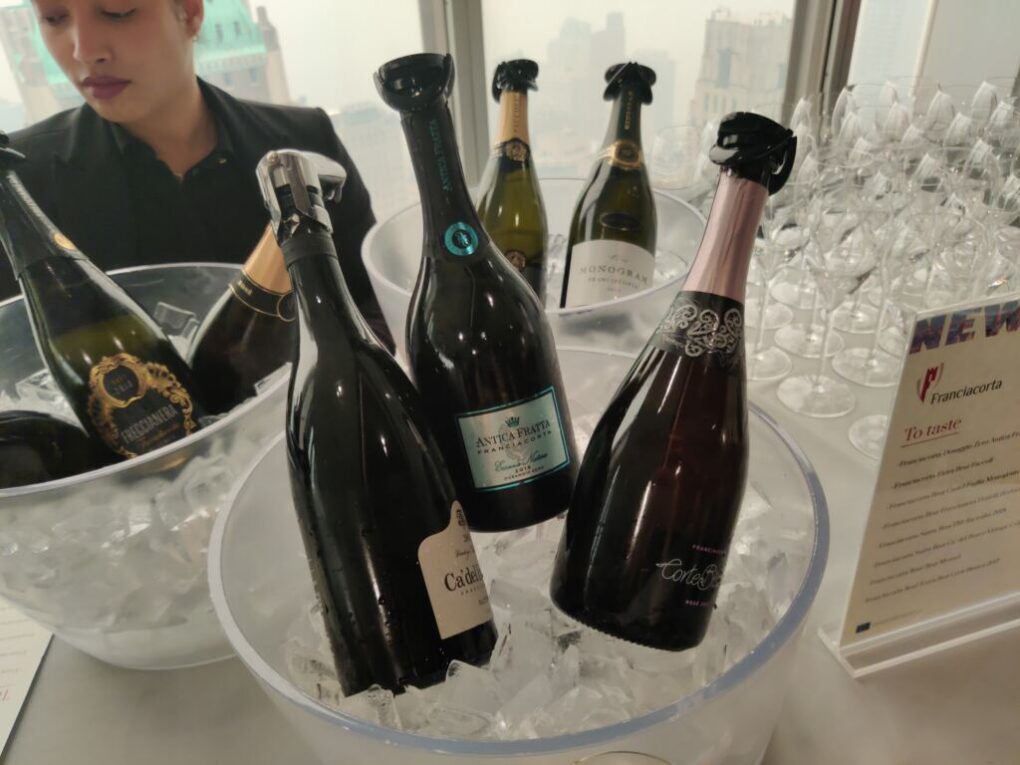
Franciacorta, Dosaggio Zero, Antica Fratta, Essence, 2018
Grapes: Chardonnay 70%, Pinot Nero 30%
Fermented in stainless steel
Aging on the lees: 42 months
Residual sugar: <1 g/l
Franciacorta, Extra Brut, Faccoli
Grapes: Chardonnay 60%, Pinot Bianco 20%, Pinot Nero 20%
Fermented in stainless steel
Aging on the lees: minimum 20 months
Residual sugar: 0 g/l
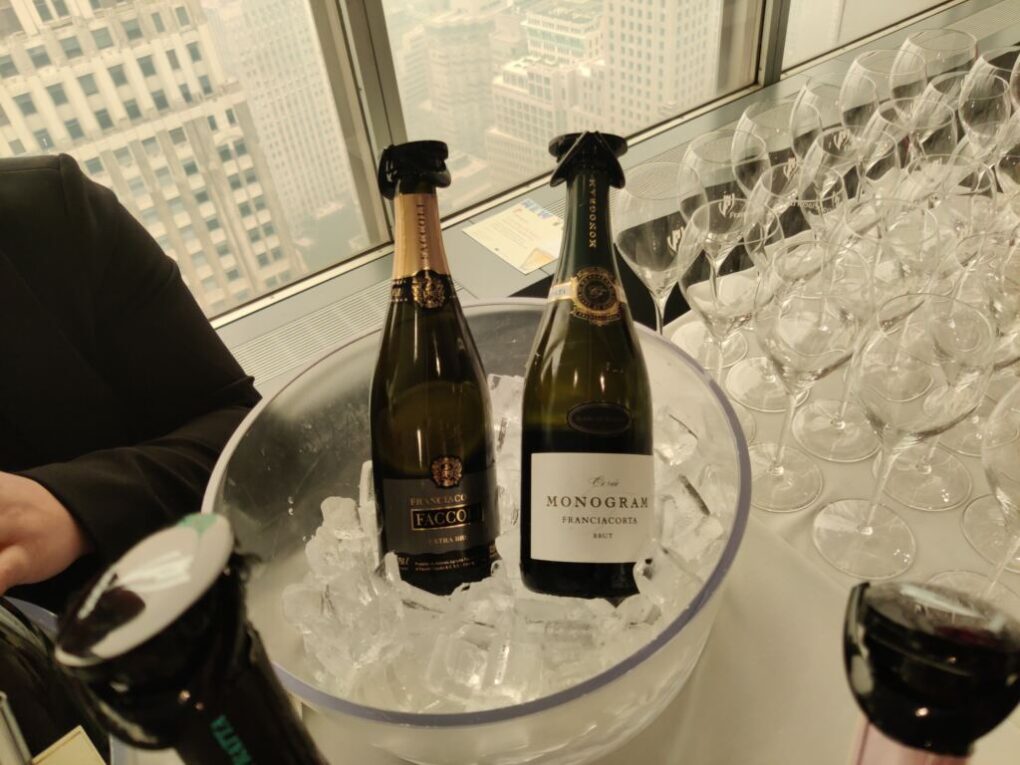
Franciacorta, Brut, Castel Faglia, Monogram
Grapes: Chardonnay 80%, Pinot Nero 20%
Primary fermentation in stainless steel vats (80%) and in small oak casks (20%)
Aging on the lees: minimum 24 months
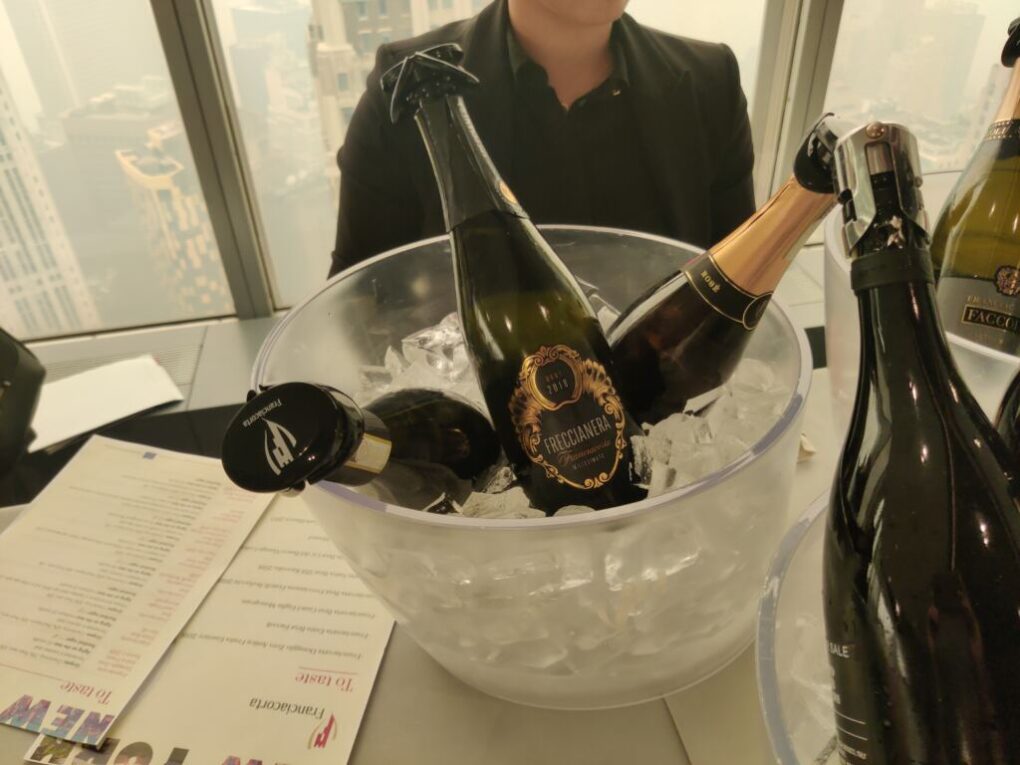
Franciacorta, Brut, Freccianera, Fratelli Berlucchi, 2018
Grapes: Chardonnay 60%, Pinot Bianco 30%, Pinot Nero 10%
Fermented in stainless steel
Aging on the lees: 60 months
Residual sugar: 7,5 g/l
Franciacorta, Satèn Brut, 1701 Raccolta, 2018
Grapes: Chardonnay 100%
Fermented in steel tanks (75%) and in third passage French oak barriques (25%)
Aging on the lees: 42 months
Residual sugar: 0 g/l
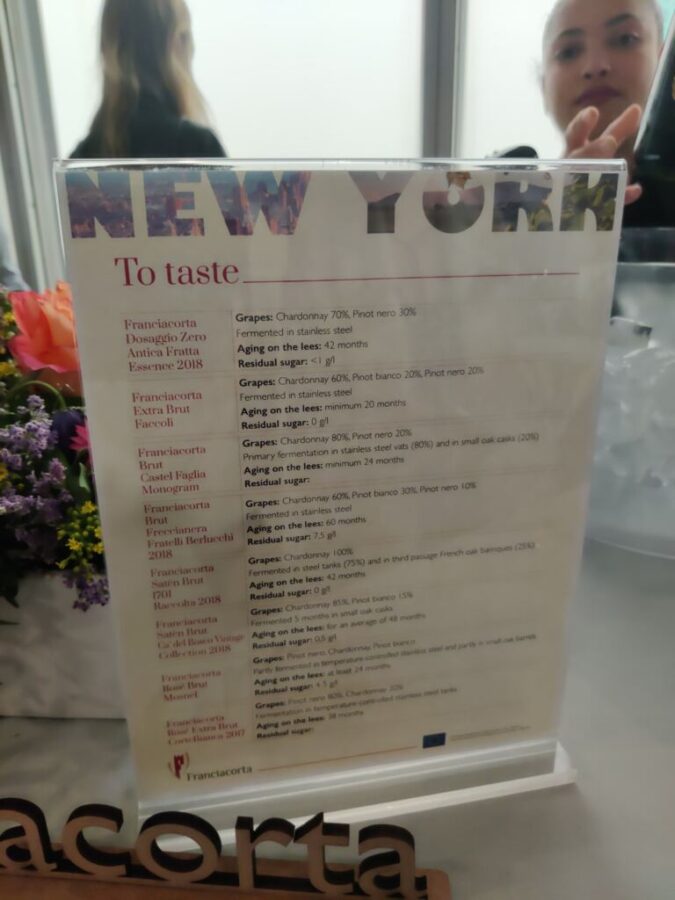
Franciacorta, Satèn Brut, Ca’ del Bosco, Vintage Collection, 2018
Grapes: Chardonnay 85%, Pinot Bianco 15%
Fermented 5 months in small oak casks
Aging on the lees: for an average of 48 months
Residual sugar: 0,5 g/l
Franciacorta, Rosé Brut, Mosnel
Grapes: Pinot Nero, Chardonnay, Pinot bianco
Partly fermented in temperature-controlled stainless steel and partly in small oak barrels
Aging on the lees: at least 24 months
Residual sugar: 4-5 g/l
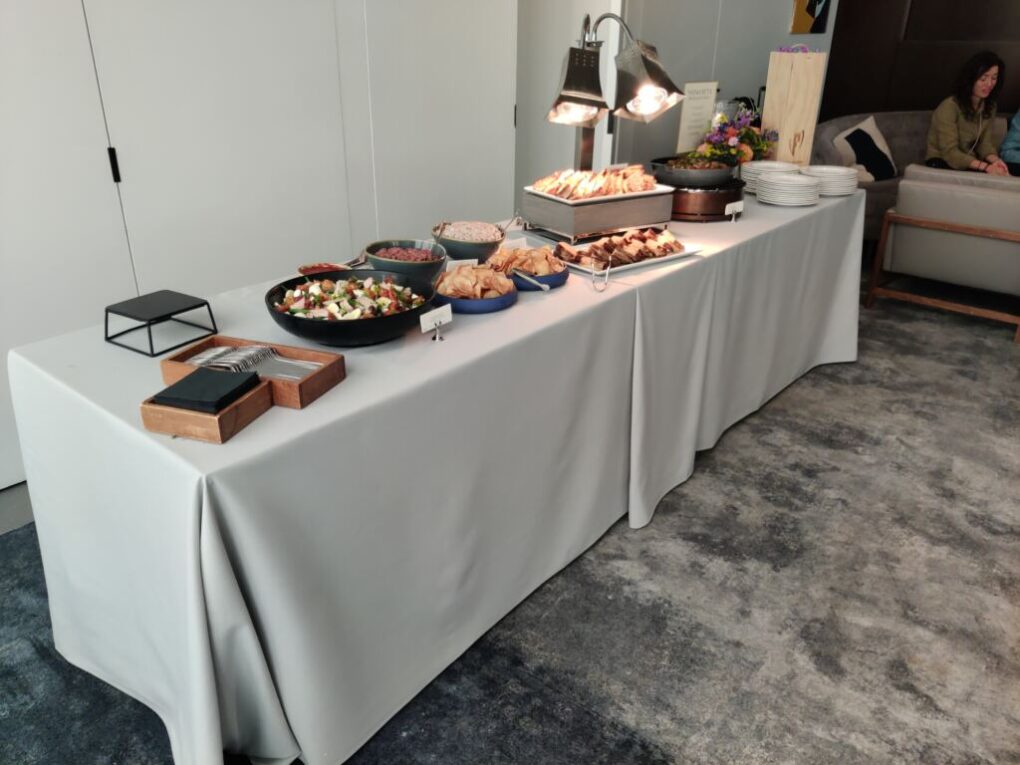
Franciacorta, Rosé Extra Brut, Corte Bianca, 2017
Grapes: Pinot Nero 80%, Chardonnay 20%
Fermentation in temperature-controlled stainless steel tanks
Aging on the lees: 38 months

Be First to Comment